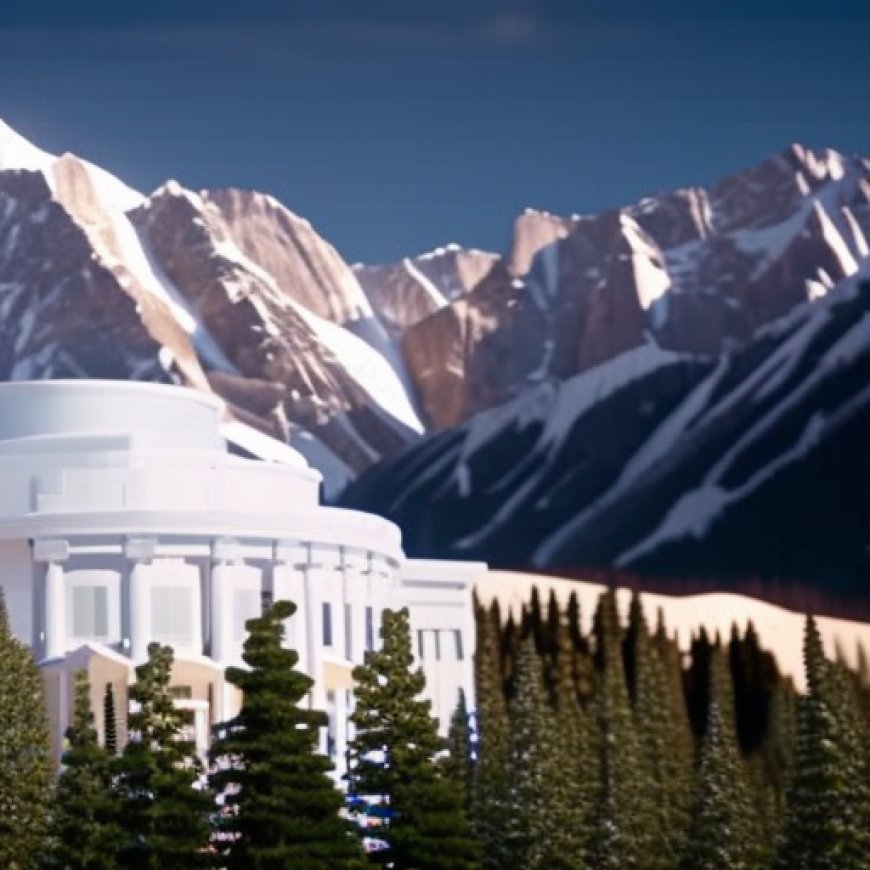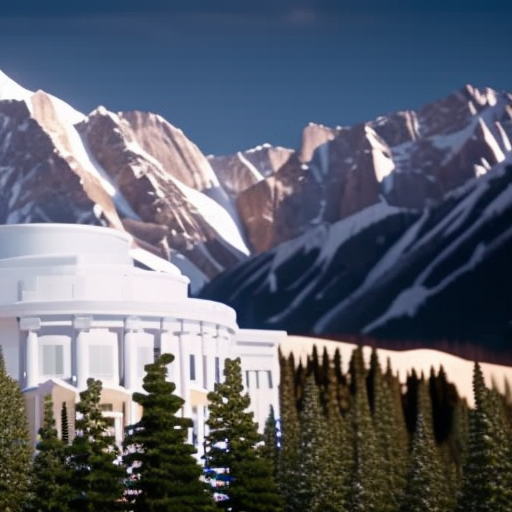Biden-Harris Administration Delivers Historic Milestones, New Actions for Clean Energy on Public Lands | U.S. Department of the Interior
Biden-Harris Administration Delivers Historic Milestones, New Actions for Clean Energy on Public Lands | U.S. ... US Department of the Interior


Date: Thursday, April 11, 2024
Contact: Interior_Press@ios.doi.gov
The Biden-Harris Administration Advances Clean Energy Development on Public Lands
Introduction
The Biden-Harris administration has announced a series of historic milestones and actions to promote responsible clean energy development on public lands. These efforts align with President Biden’s goal of creating a carbon pollution-free power sector by 2035.
Surpassing 25 Gigawatts of Clean Energy Projects
The Department of the Interior, under the leadership of Secretary Deb Haaland, has permitted over 25 gigawatts of clean energy projects, surpassing a major milestone ahead of the target year of 2025. This amount of clean energy is sufficient to power more than 12 million homes across the country. The permitted projects include solar, wind, and geothermal initiatives, as well as gen-tie lines that connect clean electricity projects to the grid.
Secretary Deb Haaland’s Statement
Secretary Deb Haaland expressed the administration’s commitment to expanding responsible clean energy development to address climate change, enhance energy security, and create well-paying union jobs. Surpassing the goal of permitting 25 gigawatts of clean energy by 2025 demonstrates significant progress in building modern climate infrastructure that protects communities from the impacts of climate change. The Interior Department will continue advancing projects to add more clean energy to the grid and ensure a sustainable future for generations to come.
Final Renewable Energy Rule
The Bureau of Land Management (BLM) has announced the final Renewable Energy rule, aimed at lowering consumer energy costs and the cost of developing solar and wind projects. The rule also improves the application process for renewable energy projects and incentivizes the use of project labor agreements and American-made materials. These measures align with the administration’s commitment to creating high-quality jobs in the clean energy economy and supporting American manufacturing.
Acting Deputy Secretary Laura Daniel-Davis’ Statement
Acting Deputy Secretary Laura Daniel-Davis highlighted the critical role of public lands in the clean energy transition. The finalization of the Renewable Energy rule is a significant milestone that allows the Interior Department to lead the way in renewable energy development. This rule supports President Biden’s commitment to building a clean energy economy, addressing the climate crisis, protecting lands and waters, promoting energy security, and creating jobs across the country.
Operational Solar Projects in California
The BLM has announced that two solar projects, the Arica and Victory Pass projects in California, are now fully operational. These projects add 465 megawatts of clean electricity to the grid, contributing to a total of over 10 gigawatts of clean energy generated on public lands. These projects play a crucial role in achieving the administration’s goal of a carbon pollution-free power sector by 2035.
BLM Director Tracy Stone-Manning’s Statement
BLM Director Tracy Stone-Manning emphasized that renewable energy projects on public lands create good-paying jobs and contribute to the administration’s goal of a carbon pollution-free power sector. The BLM is committed to addressing climate change through investments in clean and reliable renewable energy. The agency is working diligently to review and approve projects, engaging with states, tribes, and other partners to ensure the supply of clean energy, lower costs, and combat climate change.
Progress Towards the Goal of 25 Gigawatts by 2025
The Department and BLM have made significant progress in reviewing and approving clean energy projects, surpassing the goal of permitting 25 gigawatts of renewable energy. The number of approved projects under the current administration has more than doubled compared to the previous administration. The Department has permitted nearly 29 gigawatts of clean energy, enough to power over 12 million homes. Additionally, the Department has leased eight new areas in Solar Energy Zones with the capacity to generate nearly 2.5 gigawatts of additional clean energy.
Future Clean Energy Projects
The BLM is currently processing permits for an additional 66 utility-scale clean energy projects proposed on public lands in the western United States. These projects have the potential to create thousands of jobs, add over 32 gigawatts of renewable energy to the grid, and power millions of homes. The BLM is also reviewing applications for solar and wind development, demonstrating its commitment to clean energy permitting and tracking progress through an online dashboard.
Finalized Renewable Energy Rule to Continue Responsible Development
The Department has updated its renewable energy regulations to promote the development of solar and wind energy on public lands. The final Renewable Energy Rule reduces capacity fees for projects by 80% and streamlines application review processes in priority areas. This rule provides financial predictability for developers pursuing long-term projects on public land while ensuring a fair return for the use of public lands. It also supports American manufacturing jobs by incentivizing the use of project labor agreements and domestic materials.
Complementing Efforts with the Western Solar Plan
The final Renewable Energy Rule complements the BLM’s ongoing efforts to advance responsible clean energy development by updating the Western Solar Plan. The BLM is currently seeking public comment on a draft analysis of the Utility-Scale Solar Energy Programmatic Environmental Impact Statement. This analysis aims to streamline the BLM’s framework for siting solar energy projects across the West, supporting national clean energy goals, energy security, climate resilience, and conservation outcomes.
Operational Solar Projects in California
The Department has announced the full operation of the Arica and Victory Pass solar projects in California. These projects, approved under the Desert Renewable Energy Conservation Plan (DRECP), represent an infrastructure investment of approximately $689 million. They will generate economic benefits, provide power to thousands of homes, and add significant clean energy capacity. The approval of these sites involved collaboration with tribal governments, local communities, state regulators, industry, and other federal agencies.
Construction of Camino Solar Project
The BLM has also announced the beginning of construction for the Camino Solar project in Kern County, California. This 44-megawatt solar photovoltaic facility is expected to power thousands of homes and create job opportunities. The project includes an underground electrical collector line and will connect to the existing Southern California Edison Whirlwind Substation.
###
SDGs, Targets, and Indicators
1. Which SDGs are addressed or connected to the issues highlighted in the article?
- SDG 7: Affordable and Clean Energy
- SDG 9: Industry, Innovation, and Infrastructure
- SDG 13: Climate Action
2. What specific targets under those SDGs can be identified based on the article’s content?
- SDG 7.2: Increase substantially the share of renewable energy in the global energy mix.
- SDG 9.4: Upgrade infrastructure and retrofit industries to make them sustainable, with increased resource-use efficiency and greater adoption of clean and environmentally sound technologies and industrial processes.
- SDG 13.2: Integrate climate change measures into national policies, strategies, and planning.
3. Are there any indicators mentioned or implied in the article that can be used to measure progress towards the identified targets?
- Number of gigawatts of clean energy projects permitted on public lands (indicator for SDG 7.2)
- Number of clean energy projects approved and leased on public lands (indicator for SDG 9.4)
- Reduction in capacity fees for solar and wind projects on public lands (indicator for SDG 9.4)
- Number of utility-scale clean energy projects proposed on public lands (indicator for SDG 9.4)
- Number of solar and wind development applications being reviewed (indicator for SDG 9.4)
- Number of solar and wind energy site area testing applications being reviewed (indicator for SDG 9.4)
- Number of solar projects fully operational on public lands (indicator for SDG 7.2)
- Investment and economic benefits generated by solar projects (indicator for SDG 9.4)
Table: SDGs, Targets, and Indicators
| SDGs | Targets | Indicators |
|---|---|---|
| SDG 7: Affordable and Clean Energy | Increase substantially the share of renewable energy in the global energy mix. | – Number of gigawatts of clean energy projects permitted on public lands – Number of solar projects fully operational on public lands |
| SDG 9: Industry, Innovation, and Infrastructure | Upgrade infrastructure and retrofit industries to make them sustainable, with increased resource-use efficiency and greater adoption of clean and environmentally sound technologies and industrial processes. | – Number of clean energy projects approved and leased on public lands – Reduction in capacity fees for solar and wind projects on public lands – Number of utility-scale clean energy projects proposed on public lands – Number of solar and wind development applications being reviewed – Number of solar and wind energy site area testing applications being reviewed – Investment and economic benefits generated by solar projects |
| SDG 13: Climate Action | Integrate climate change measures into national policies, strategies, and planning. | – Number of clean energy projects approved and leased on public lands – Number of solar and wind development applications being reviewed – Number of solar and wind energy site area testing applications being reviewed |
Behold! This splendid article springs forth from the wellspring of knowledge, shaped by a wondrous proprietary AI technology that delved into a vast ocean of data, illuminating the path towards the Sustainable Development Goals. Remember that all rights are reserved by SDG Investors LLC, empowering us to champion progress together.
Source: doi.gov

Join us, as fellow seekers of change, on a transformative journey at https://sdgtalks.ai/welcome, where you can become a member and actively contribute to shaping a brighter future.







